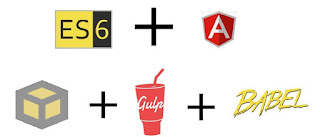Python, Docker and Amazon Elastic Beanstalk
When delving into the world of infrastructure there are many choices of cloud platform, ranging from completely custom setups, to off-the-shelf solutions such as Google AppEngine.
Today i'm looking at how off-the-shelf infrastructure (Amazon Elastic Beanstalk in particular) can speed up DevOps and deployments, and reduce the overhead on maintenance.
Today i'm looking at how off-the-shelf infrastructure (Amazon Elastic Beanstalk in particular) can speed up DevOps and deployments, and reduce the overhead on maintenance.
Detect speech using the Web Speech Recognition API
As the web matures, we can use interfaces and sensors with improved cross browser/device compatibility. However normally we are given access to the raw data and expected to do our own processing. This has made detecting speech in audio data very intensive, and inaccessible for lower end devices.
The formalising of a Web Speech API opens up a realm of possibilities because it moves the processing into the native browser code and out of javascript. We can now access speech input data much easier and efficiently.
Use ES6 JavaScript today using System.JS, Babel, JSPM and Gulp
 Developers are always looking forward to future JavaScript features, including structured classes shorthand coding and helpers. However many of these features are not standardised and/or compatible with all modern browsers, and the ones that are agreed are not supported by legacy browsers.
Developers are always looking forward to future JavaScript features, including structured classes shorthand coding and helpers. However many of these features are not standardised and/or compatible with all modern browsers, and the ones that are agreed are not supported by legacy browsers.There are many tools which allow you as a developer to write using future features, and the tools will convert your code to support other browsers. Today we are going to look at how they work and an example workflow which you can use now on live projects.
Trimming videos using AngularJS
Playing video within the browser has become a fairly painless experience using the html5 video player. But there are many challenges as you add complexity to the controls. One of these is how you could set in and out points.
Here we will look at a way to trim videos using the angular-slider library and AngularJS.
Here we will look at a way to trim videos using the angular-slider library and AngularJS.
A/B Tests using Google Analytics, Content Experiments and JavaScript
When creating templates on high-end websites, it's useful to know how well the template was performing before and how that performance changed after updating. This can be achieved using Google Analytics (bounce rate, session duration and goals).
But what happens when the performance drops drastically and you want to go back to the original? How can you do this without risking losing sales or traffic? A/B tests allow you to test multiple variations of the template and measure which performs better.
Here we will look how to do it using free Google tools.
But what happens when the performance drops drastically and you want to go back to the original? How can you do this without risking losing sales or traffic? A/B tests allow you to test multiple variations of the template and measure which performs better.
Here we will look how to do it using free Google tools.
Block based WYSIWYG editor using Angular
If you haven't already seen Sir Trevor JS, then you must take a look now! It allows the user to insert blocks of different types, with a really nice interface.
There are many benefits to this approach in a responsive site, as the content types are separated using json and can be outputted in rows. I have used Sir Trevor JS along with Wagtail Streamfield, which does a similar thing.
But what if we want the same experience on an Angular project? well unfortunately the only version available is a wrapper around the main version, without proper Angular integration. I decided to write my own which could support the integration better. Here is how I did it.
There are many benefits to this approach in a responsive site, as the content types are separated using json and can be outputted in rows. I have used Sir Trevor JS along with Wagtail Streamfield, which does a similar thing.
But what if we want the same experience on an Angular project? well unfortunately the only version available is a wrapper around the main version, without proper Angular integration. I decided to write my own which could support the integration better. Here is how I did it.
Subscribe to:
Comments (Atom)













